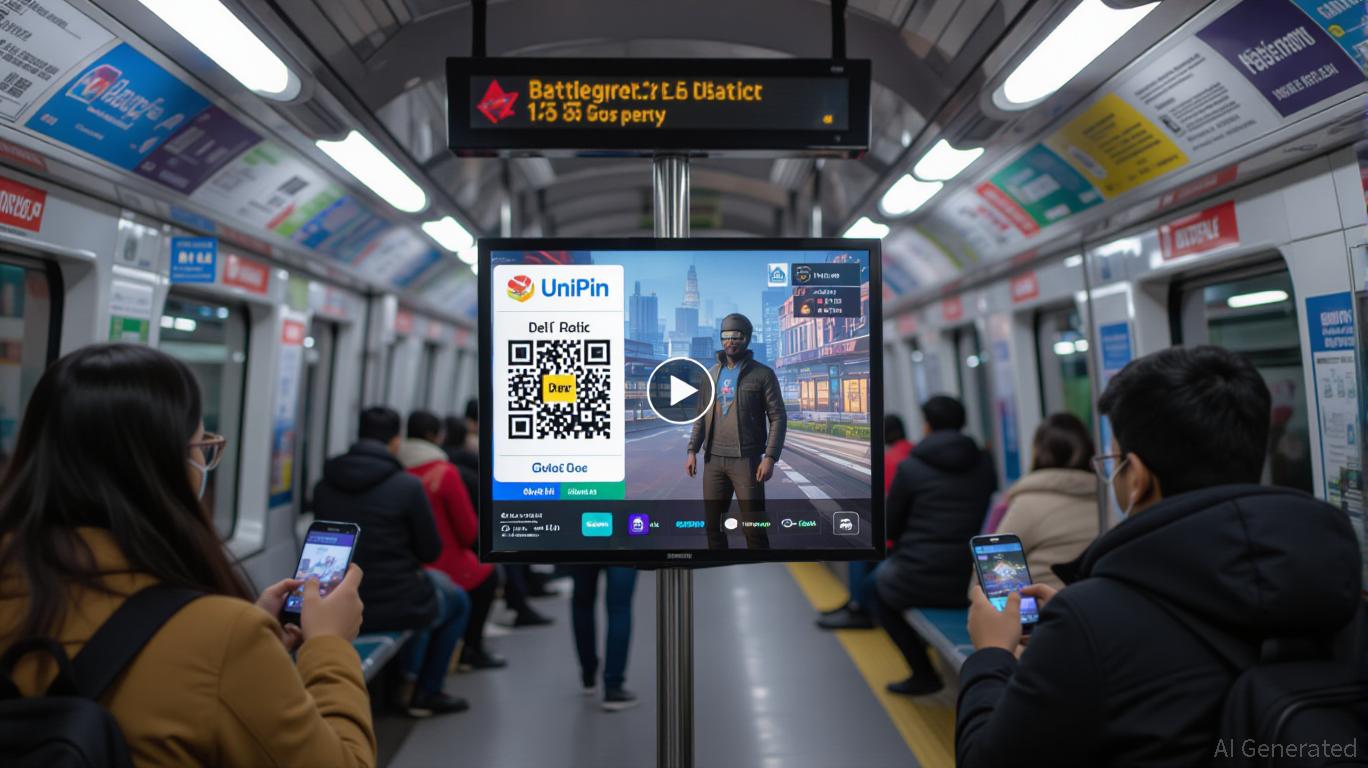
India’s gaming and fintech sectors are undergoing a seismic shift, driven by hyper-connected youth demographics, surging digital payments adoption, and innovative brand engagement strategies. At the forefront of this transformation is UniPin India, a digital entertainment enabler that has redefined the intersection of gaming, fintech, and urban infrastructure through its groundbreaking “Spot Us on Delhi Metro” campaign. This initiative, launched in August 2024, not only underscores the company’s agility in leveraging real-world interactions but also reflects broader market tailwinds shaping India’s $5.83 billion gaming economy and its $15.2 billion projected value by 2033.
The Delhi Metro Campaign: A Fusion of Fintech and Gamification
UniPin’s campaign transformed the Delhi Metro into an interactive platform for gaming credit rewards. By embedding station-specific codes at five high-traffic metro stations—Hauz Khas, Rajiv Chowk, Huda City Centre, Vishwavidyalaya, and Laxmi Nagar—UniPin incentivized commuters to scan QR codes and enter a draw for gaming credits for titles like BGMI, Valorant, and Roblox. The campaign’s success hinged on its ability to merge digital payments infrastructure with gamified incentives, creating a seamless experience for India’s 500 million smartphone users.
This strategy aligns with India’s fintech boom, where UPI transactions surged to 16.73 billion in December 2024, averaging over 50 transactions per citizen monthly. By integrating QR code-based rewards into public transport, UniPin capitalized on the UPI-driven habit of instant digital transactions, while also tapping into the $9.9 billion mobile gaming market expected to grow at a 16.16% CAGR through 2032. The campaign’s focus on eco-friendly Diwali celebrations in 2024 further demonstrated its alignment with sustainability trends, a key differentiator in a market where 70% of Gen Z consumers prioritize brands with social responsibility.
Youth-Driven Demand and the Rise of Digital Wallets
India’s gaming economy is fueled by a demographic dividend: 65% of its population is under 35, with 500 million active mobile gamers. This cohort, characterized by high smartphone penetration and a preference for cashless transactions, is a prime target for companies like UniPin. The Delhi Metro campaign’s emphasis on in-game UC (UniPin Credit) bonuses—such as a 450 UC reward for purchasing 1,500 UC—mirrored the broader trend of microtransactions and play-to-earn models, which now account for 70% of gaming revenue in India.
The e-wallet sector, a critical enabler of this ecosystem, is also expanding rapidly. Platforms like PhonePe, Google Pay, and Paytm have integrated gaming and digital entertainment services, with the e-wallet market projected to reach $12.5 billion by 2026. UniPin’s partnerships with these platforms, combined with its role as Krafton’s official distribution partner for BGMI and Road to Valor: Empires, position it as a bridge between gaming demand and fintech accessibility.
Investment Potential: Gaming and Fintech as Dual Growth Engines
The Indian gaming and fintech sectors present a compelling investment case, driven by three key factors:
-
Digital Payments Infrastructure: UPI’s dominance (75% of transaction volumes) and the proliferation of e-wallets create a fertile ground for gaming credit platforms. UniPin’s ability to offer localized payment options—e-wallets, direct carrier billing, and retail partnerships—ensures scalability in Tier II and III cities, where gaming adoption is growing at 20% annually.
-
Youth-Centric Innovation: The Delhi Metro campaign’s success highlights the power of hyper-personalized engagement. By aligning with youth interests (e.g., mobile gaming, sustainability), UniPin taps into a market where 60% of gamers are willing to pay for in-game rewards. This mirrors global trends, where AI-driven personalization is expected to boost fintech user retention by 30% in 2025.
-
Regulatory Tailwinds: India’s supportive regulatory environment, including the India Stack and UPI’s open architecture, fosters innovation. The government’s push for AVGC (Animation, Visual Effects, Gaming, and Comics) sector growth through tax incentives and training programs further strengthens the ecosystem for gaming startups.
Strategic Risks and Mitigation
While the outlook is optimistic, investors must consider risks such as regulatory scrutiny (e.g., potential restrictions on in-game purchases) and saturation in the mobile gaming segment. However, companies like UniPin that diversify into esports, cloud gaming, and metaverse platforms—as seen in Vi’s Cloud Play partnership—can mitigate these risks. Additionally, the integration of AI-driven credit scoring and blockchain-based rewards (as demonstrated in UniPin’s Diwali Mahotsav campaign) offers a competitive edge.
Conclusion: A Win-Win for Investors
UniPin India’s Delhi Metro campaign exemplifies the confluence of gaming, fintech, and urban innovation. By leveraging India’s digital payments infrastructure and youth-driven demand, the company has positioned itself as a leader in a market poised for exponential growth. For investors, the gaming and e-wallet sectors represent a dual opportunity: high-growth exposure to a $22.53 billion gaming market and a $15.2 billion fintech ecosystem. As UPI adoption accelerates and gaming becomes a mainstream entertainment category, strategic investments in platforms like UniPin—those that bridge virtual and real-world engagement—will likely yield substantial returns.
Investment Advice: Consider allocating capital to gaming and fintech firms with strong UPI integration, youth-centric product offerings, and partnerships with global game publishers. Monitor regulatory developments in the AVGC sector and prioritize companies with AI and blockchain capabilities to future-proof portfolios.
